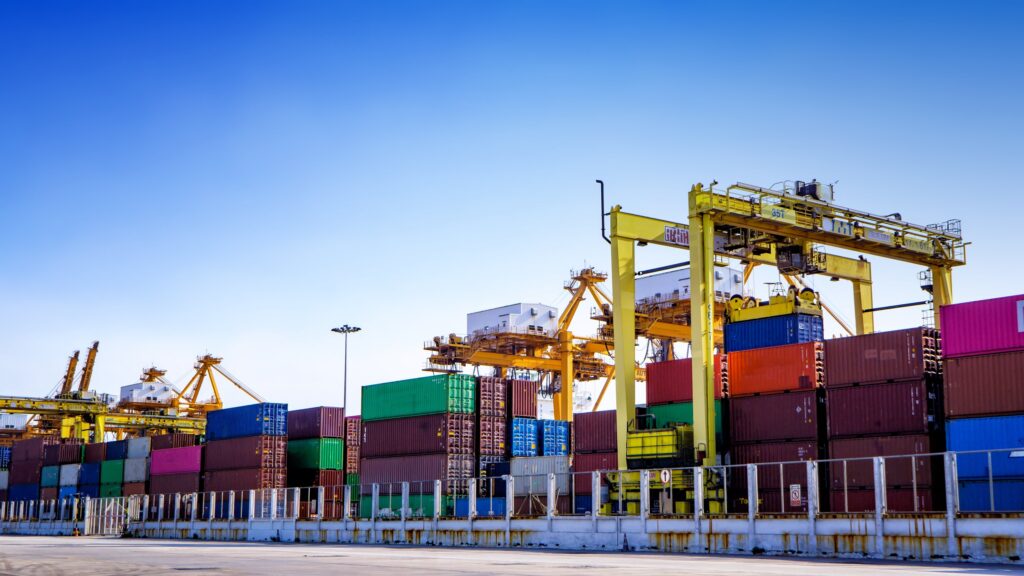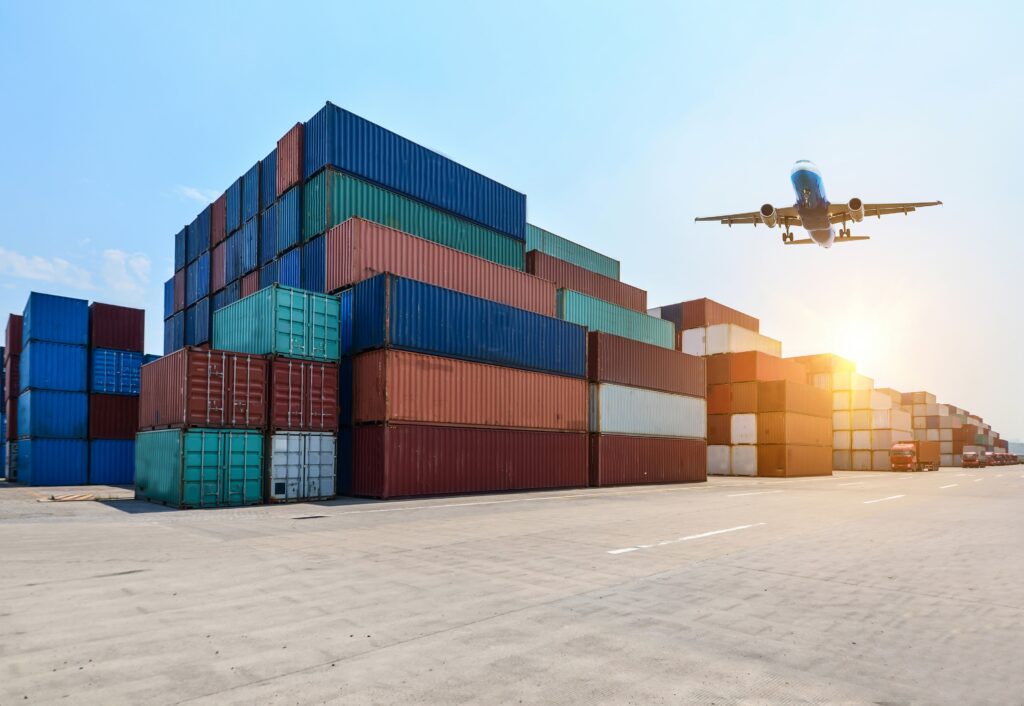How to Ship a Car Overseas – Everything You Need to Know

If you’d like to ship a car overseas, there are several things you’ll need to do so. You’ll need to make sure your car meets the requirements of the country you’d like to ship your car to. You’ll also need to choose your shipping carrier, shipping method, fill out your shipping documents, prepare your car for shipment, and have your car inspected. As you can see from the list you just read, shipping your car overseas requires more than just putting your car and sending it overseas.

A Step by Step Guide for Shipping Your Car Overseas
We’ve prepared a step-by-step guide for shipping your car overseas. By reviewing this post you’ll gain a full understanding of what approach to use when shipping your car. You’ll also learn how each decision you make will influence the overall price you pay when shipping your car.
Research Car Shippers
Like all things in life, if you want to make an informed decision you’ll need to do your research. By understanding how the car shipping process works, you’ll be able to feel more confident in each decision you make. Before you know it, you’ll be able to decide whether you want to ship during the summer season, or if you’ll decide to use Roll on Roll off (RoRo) shipping or container shipping to send your car overseas. The research will also help you determine the general price you’ll pay to ship your car to a certain region of the world.
Request and Compare Quotes
Requesting and comparing quotes is one of the best ways to discover the cost of shipping a car overseas. The number you receive from different companies will help you gauge what companies and services are within your budget.
When requesting and comparing quotes, there are a few things you’ll want to keep in mind:
- The quote you receive is just that, an estimate. The difference between the low and high end of the estimate is dependent on the shipping service / method you choose, the time of year, and the reputation of the company.
- By comparing quotes you can get a general sense of what the cost will be to ship your car overseas.
- The quote is not a reflection of the final number you’ll receive from the company. You’ll have to talk to an agent to know exactly what details are, and aren’t included in the quote. Some quotes won’t account for insurance and the different duties and taxes you’ll pay when your vehicle arrives at the destination port.
NOTE: You’ll need to talk to an agent to get all of the specific details for what services are, and aren’t included in the final number you are provided by the agent.

Choose Your Shipping Method
When you get ready to ship a car overseas, you’ll need to decide what method you’ll choose to send your vehicle from the shipping port to the destination port. Vehicles are shipped one of three ways: RoRo shipping, container shipping, or air freight shipping. Airfreight isn’t used by the majority of people because of its high cost. Today, we’ll only be covering RoRo shipping and container shipping.
- RoRo shipping is the most economical way to send your car overseas. This shipping method involves your car being rolled onto the vessel, secured, and kept in the same spot until it arrives at its destination port.
- Container shipping as the name suggests involves your vehicle being loaded into a protected container. Container shipping is more expensive than RoRo shipping, but it also provides a layer of added protection. RoRo shipping can leave your car vulnerable to elements as the vessel is making its way across the sea. Container shipping allows you to have the peace of mind that your car won’t be damaged by harsh weather conditions. Depending on the size of the container you choose, you may also be able to ship personal belongings along with your car.
Selecting Your Car Shipping Carrier
As alluded to earlier, the price you pay to ship your car will be influenced by how you decide to ship your car as well as who you decide to ship your car with. While you are doing research, comparing quotes, and determining your budget, you’ll need to select your car shipping carrier.
However, the carrier you choose will also depend on certain factors. You’ll need to choose a carrier who can work within your timeframe for shipping your car. They’ll also need to be able to provide your preferred shipping method and ship to your chosen country. In addition to shipping to your country of interest, the shipping carrier will also need to ship to your port of interest. It’s important to make sure your chosen carrier does both, otherwise, you’ll incur the additional cost of traveling to a port that isn’t your vehicle’s preferred final destination. Keep in mind that the more research you do, the better you’ll be able to decide which shipping carrier will be able to provide everything you need.
Get Your Documents Ready
Once you’ve decided on which carrier you’ll use to ship your car overseas, you’ll need to get your car ready for shipment. One of the key steps in preparing your car to travel from one country to the next is filling out the necessary paperwork. Each country requires different paperwork, so it’s recommended that you reach out to a customs’ agent for the country you are shipping your car to. The customs agent will indicate exactly what forms you’ll need to import your car. They’ll also inform you of what standards your car will need to meet in order to be imported into the country. Every country has its own unique laws and regulations for what vehicles can, and can’t, be imported.
NOTE: If you don’t like filling out paperwork, many car shipping carriers offer customs clearance services at a small additional cost.
Get Your Car Prepared for Shipment
When you get your car ready to be shipped there are things you’ll need to do. One is required, and the others are suggested.
- Communicate with the shipping carrier to determine what can, and can’t be kept inside your car when it’s shipped to the destination port. Most likely, you’ll be told you can’t keep any personal belongings inside your car. The general rule of thumb is that your car can only contain ¼ a tank of gas and items used to keep the car operational ( jumper cables, toolkit, spare tire, etc.) You should also be certain you are removing any important documents from your car such as your registration and insurance. (Required)
- Perform your own car inspection. Take photos of your car and note the current working condition of your vehicle. Be detailed. This will help you to notice any changes that occur to your vehicle from the time it’s shipped to the time it arrives at the destination port. (Suggested).
- Get your vehicle clean. It’s very important for your car to be clean both inside and out. When your vehicle arrives at the destination port it will be inspected for debris, rodents, and other materials. If anything of the three are found inside your car you may incur additional charges, or may risk your vehicle not being imported into the country. Having your car cleaned before it ships will make for a quick and easy inspection at the destination port. (Suggested)
Have Your Vehicle Inspected
As mentioned above, you should perform your own inspection of your vehicle. But it’s also important to note that certain countries may require you to have your car inspected before it’s shipped to the destination port. The primary reason for this inspection is so that the country will know ahead of time if your car meets the requirements for importation. If it doesn’t, then some countries will still allow you to import your car but will charge you additional duties, taxes, and fees.
Make Your Payment
The final step in shipping your car overseas is making your payment. Once your payment is made, your car will be shipped overseas to your destination port. The vast majority of car shipping carriers will accept credit card payments and debit card payments. Because of the high cost of shipping, a car not every carrier will accept cash payments.

Understanding the Cost of Shipping Your Car
Shipping Fees
When you ship your car overseas, there are three primary factors determining the overall cost. The trucking cost, the size and weight of your vehicle, and the distance your vehicle has to travel.
- Your trucking cost is dependent upon whether or not you ship your car using door-to-port service or a port-to-port service. Door-to-port involves an agent from the carrier traveling to your home to retrieve your car and bring it to the shipping port. Then, all you have to do is pick your vehicle from the destination port. Port-to-port, on the other hand, involves you dropping your vehicle off at the shipping port and picking it up from the destination port. By choosing port-to-port, you won’t be charged a trucking charge. However, you’ll also be responsible to find your way back home without a vehicle.
- The weight and size of your vehicle will be one of the primary factors that determine the cost of shipping your vehicle. The bigger your car is and the more it weighs, the more you’ll be expected to pay. Some carriers categorize vehicles and then charge a flare rate depending on what category your vehicle falls into. Other carriers use a more precise method and charge a set price per pound.
Storage Fees
After your car is shipped to the destination port, it will be stored there for five to seven days. When you arrive to pick up your car, you’ll be expected to pay the country’s import duties, taxes, and fees. One of these fees may be a storage fee, which is based on how long your car remained to wait to be picked up. This fee is similar to paying to park in a parking garage.
Other Costs You May Incur
As mentioned above, after your car is shipped to a country, you will be charged duties, taxes, and fees based on the make and model of your vehicle. Typically, the older your vehicle is, the more you’ll have to pay to import your car. You can also be charged higher duties and taxes if your vehicle is oversized and considered to be a gas guzzler.
NOTE: Before you ship your car, you should talk with a customs’ agent. The agent will tell you what import duties and taxes you’ll be made to pay as well as any additional costs you may incur for importing a particular vehicle.
Here are a few techniques you can use from incurring additional costs when shipping your car.

How Long Will it Take for Your Car to Arrive?
The length of time it takes for your car to arrive at its destination port depends on where you are shipping from, whether you’ve chosen expedited shipping, and the season. The further your vehicle has to travel, the longer it will take to get there.
- A car can arrive in as little as a week, or as long as two months.
- Paying for expedited shipping will speed up the process. You can cut down on longer wait times by choosing rush shipping, but it will greatly affect the price you pay.
- Car shipping is the busiest during the summer season. If you choose to ship during the summer you may experience delays due to congestion on the seas. You may also have to pay higher prices for expedited shipping to make sure your car arrives when you want it to. Shipping during the winter months can yield similar results as many people try to take advantage of the off-season, which can still lead to congestion on the open seas.
Who Can Pick Up My Car?
Your car can be picked up by one of two parties: yourself or your consignee. It’s preferred for you to be the person who retrieves your car. That way the government can confirm your identity, insurance, and ownership of the car. However, by having a consignee, you are giving another party the right to pick up the car on your behalf.
Conclusion
After reading this blog you’ve learned about the different aspects of how to ship a car overseas. You’ve discovered how car shipping works, the type of research you’ll need to do before you ship your car, and what factors determine the number you’re quoted by an agent. You’ve also learned about the additional charges you may have to pay in addition to having your car shipped overseas.
 +1 (908) 436-2150
+1 (908) 436-2150


